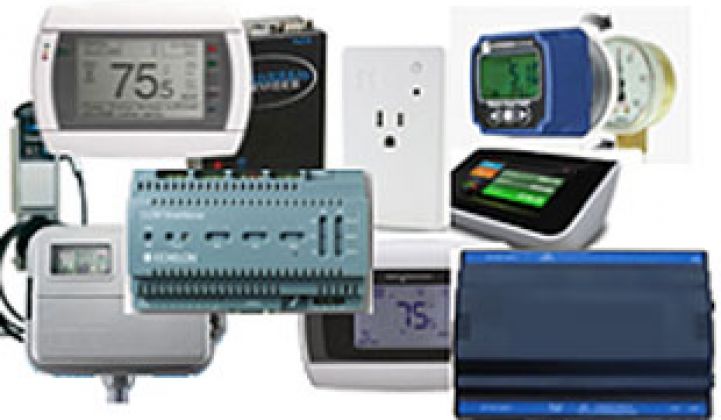Austin Energy has completed its first successful demand response events using a Demand Response Optimization and Management System (DROMS) provided by AutoGrid Systems.
The size of the pilot is small, involving about 60 smart thermostats and fifteen ChargePoint electric vehicle (EV) chargers. But the implication of bringing together various thermostat providers (along with, eventually, a bevy of other devices) could be significant for the Texas utility down the road.
Austin Energy’s pilot is part of a larger shift toward BYOT (bring your own thermostat) programs that involve utilities leveraging existing two-way smart thermostats within their territory for demand response.
One of the largest programs to be announced to date is Southern California Edison’s pilot, which brings together Alarm.com, Radio Thermostat Company of America, Vivint, Ingersoll Rand: Nexia Home Intelligence, Trane, American Standard and Nest. EnergyHub’s platform manages the thermostats for all of the providers except for Nest.
Although Austin Energy only integrated two types of thermostats and the EV chargers, AutoGrid’s system already has the potential to work with at least fifteen thermostat companies, according to Scott Jarman, Austin Energy's interim director of Energy Efficiency Services.
The integration of EV chargers as part of a residential demand response program is novel, but the pilot only tested whether the communications between the utility and the charger were effective, which they were. Currently, Austin Energy does not offer an electric vehicle rate, so it is using the data from this pilot to understand how the utility can bring more EVs onto the grid in a way that works for the grid and for customers who need their cars charged by a certain time each day.
“The purpose of controlling the EV charger was to simply test the communications capability,” said Russell Shaver, project manager at Austin Energy. “But we also wanted to obtain data to just see when load is available. At this point, we don’t really have data as to when people are charging.” The EV pilot participants received a rebate for their home EV chargers in exchange for participating in pilots.
Austin Energy used AutoGrid’s open-architecture, hardware-neutral DROMS platform to execute demand response events more efficiently than if it had to tap into multiple vendor portals. The utility would eventually love to have a single demand response platform for its goal of 800 megawatts of demand reduction by 2020. About 100 of those megawatts are expected to come from residential customers.
“We very much desire two-way communication,” Jarman said, “but the price of a two-way thermostat as a utility asset was cost-prohibitive.”
The participants picked for the current pilot came from Austin Energy’s Power Partner program. The utility has about 3,000 thermostats on the program, which launched this year, and is adding about 200 thermostats per week. For the pilot, Austin Energy saw more than 80 percent of participants participate in each event.
The goal is to take the program far beyond just a handful of thermostat companies, and that means having a single open-source platform that can communicate with multiple vendors.
“With open standards, we hope to leverage multiple devices,” said Carlos Bravo, senior director of client solutions at AutoGrid Systems. AutoGrid uses the OpenADR protocol in its DROMS platform to communicate with the thermostats, but it can also provide a path for legacy systems, such as older Honeywell thermostats with one-way paging, to integrate their proprietary protocol into DROMS.
Austin Energy has about 35 megawatts from its legacy program through Comverge, which has one-way demand response with about 90,000 customers. The pilot did not test the connection with Comverge’s hardware, but Bravo said that AutoGrid’s platform could communicate over multiple protocols.
Another advantage is that AutoGrid can not only bring together multiple technologies -- including thermostats, EV chargers, pool pumps and hot water heaters -- but that it is also one-stop shopping for utilities to run both residential and commercial and industrial demand response platforms.
Eventually, Austin Energy sees a world in which it is not just executing emergency demand response, but also performing more fluid demand management using everything from a pool pump at a house to industrial load shedding.
“Our goal is to create a snowball effect,” Jarman said of growing residential demand response through various vendors. “Not only do we want two-way communication, but we want to do it in a way that’s customer-friendly.”



